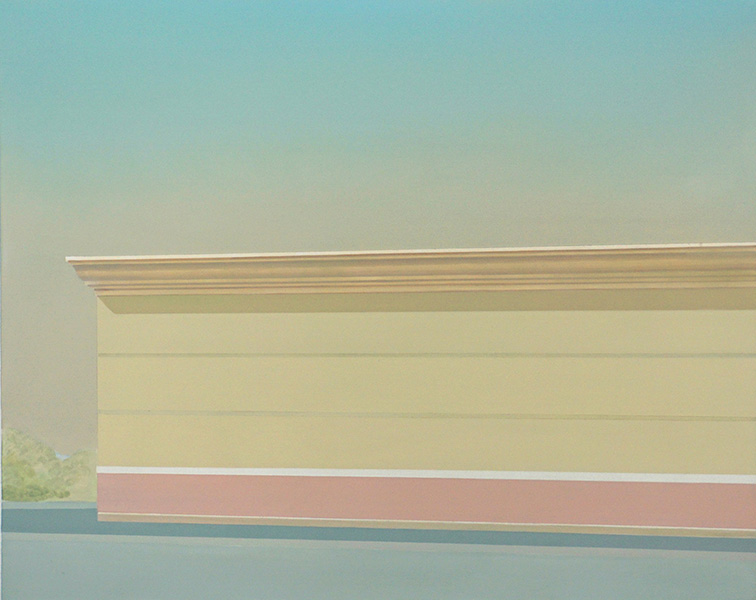
February 20, 2017
Internal Landscapes and Shared Memories: Jake Longstreth & Ann Toebbe in St. Augustine
by Lily Kuonen
The daily news headlines indicate that we are treading on unstable terrain in our American political landscape. We process this experience both personally in our own day-to-day lives, and publicly through a broader lens. Our experience of America is a constantly shifting reality that embodies our historical and personal memory as well as the anticipation of our future.
Two disparate yet thematically related exhibitions, featuring the work of Jake Longstreth and Ann Toebbe, opened within a day of each other in St. Augustine, Florida. Longstreth externalizes and generalizes the American experience through vacant and forlorn landscapes, while Toebbe personalizes an American experience by rendering detailed yet confining household interiors based on memories.
The 32 paintings (made between 2003 and 2016) included in Longstreth’s show — “Pastures & Parking Lots: Outtakes and Other Rarities, 2003 – 2016” at the Crisp-Ellert Art Museum (CEAM) of Flagler College, fall into two categories: empty parking lots with abandoned storefronts of big box stores and fast food chains, and expansive landscapes with sweeping mountains obscured by dense and glaring atmospheres. The relationship of these subjects reveals the conflicted and compromised American landscape. With the exception of a couple of cows and a car, most of the paintings contain only hazy skies and potent sunlight. They project a lonely and mysterious desolation — in a way, a very bleak sublime.
The six drawings in Toebbe’s exhibition“Room Air Conditioner” at nearby Monya Rowe Gallery (both artists are represented by Monya Rowe) are all recent works. Similar to Longstreth’s paintings, they make connections to very different eras and time periods that are tangentially related and intertwined with Toebbe’s personal history. Her drawings are interpretations of memories, detailing domestic interiors like a puzzle of shifting perspectives: aerial, linear, stacked, and oblique. The graphite and colored pencil works of desaturated colors of patterns and shapes are a negotiation of memory. The interiors are inhabited, like two-dimensional dioramas, by collections of the home: furniture, framed family photos, children’s drawings, indoor plants, books, toys, trinkets, and layers of suburban artifacts. They are devoid of people, except in the titles (like The Girl’s Room and Ex-Wife). The images are derived from personal recollections. These remembered spaces do not reflect the warmth of nostalgia; rather, they are compartmentalized and organized like a controlled climate.
Both shows lack a physical human presence, to differing effect. Longstreth’s work epitomizes a quality of anonymity, where the isolated architecture and landscapes are somehow both specific and ubiquitous. Alternately, the catalogued density of Toebbe’s interiors reveals how generic furnishings and consumer goods become personalized by arrangement, use, and incorporation into personal lives.
The artists also employ differing formal and technical qualities. Longstreth’s palette, application of paint, and select removal of details become a distancing strategy. It is clear the paintings are edited and rendered based on a combination of memory and photographic interpretation.
While Longstreth’s images echo the dissonant visions of American Regionalism, Toebbe’s work conjures the familiar aesthetic of American folk art that is complex with idiosyncratic memory. More than paintings, drawings tend to reveal the process of their making. In passages of Toebbe’s work there are underlying impressions of erased lines and rearranged details, which serve to symbolize the faults of memory. They are a record of personal relationships as defined through shifting space. In her works, the editing affects perspective, but not the complexity of details.
The family photographs and children’s drawings in Toebbe’s drawings offer a slight but necessary sense of personal attachment. As interior drawings by a woman artist, there are easy assumptions that can be made. Similarly, male interpretations of architecture and landscapes may have limiting associations. But in their individual approaches, both artists engage traditions of American art in search of a unifying experience.

